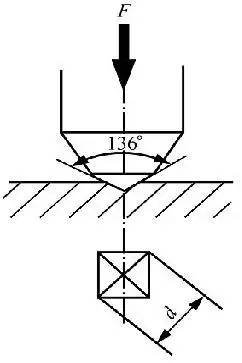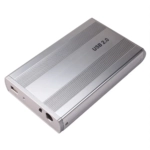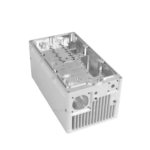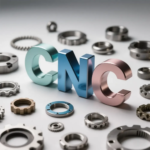Commonly used HV-HB-HRC hardness comparison table
Common Ferrous Metal Hardness Comparison Table (Approximate Strength Conversion) | ||||
Hardness classification | tensile strength N/mm2 | |||
Lowes | Victorinox | Bruce | ||
CRH | HRA | excluding tax | H.B. | |
17 | — | 211 | 211 | 710 |
17.5 | — | 214 | 214 | 715 |
18 | — | 216 | 216 | 725 |
18.5 | — | 218 | 218 | 730 |
19 | — | 221 | 220 | 735 |
19.5 | — | 223 | 222 | 745 |
20 | — | 226 | 225 | 750 |
20.5 | — | 229 | 227 | 760 |
21 | — | 231 | 229 | 765 |
21.5 | — | 234 | 232 | 775 |
22 | — | 237 | 234 | 785 |
22.5 | — | 240 | 237 | 790 |
23 | — | 243 | 240 | 800 |
23.5 | — | 246 | 242 | 810 |
24 | — | 249 | 245 | 820 |
24.5 | — | 252 | 248 | 830 |
25 | — | 255 | 251 | 835 |
25.5 | — | 258 | 254 | 850 |
26 | — | 261 | 257 | 860 |
26.5 | — | 264 | 260 | 870 |
27 | — | 268 | 263 | 880 |
27.5 | — | 271 | 266 | 890 |
28 | — | 274 | 269 | 900 |
28.5 | — | 278 | 273 | 910 |
29 | — | 281 | 276 | 920 |
29.5 | — | 285 | 280 | 935 |
30 | — | 289 | 283 | 950 |
30.5 | — | 292 | 287 | 960 |
31 | — | 296 | 291 | 970 |
31.5 | — | 300 | 294 | 980 |
32 | — | 304 | 298 | 995 |
32.5 | — | 308 | 302 | 1010 |
33 | — | 312 | 306 | 1020 |
33.5 | — | 316 | 310 | 1035 |
34 | — | 320 | 314 | 1050 |
34.5 | — | 324 | 318 | 1065 |
35 | — | 329 | 323 | 1080 |
35.5 | — | 333 | 327 | 1095 |
36 | — | 338 | 332 | 1110 |
36.5 | — | 342 | 336 | 1125 |
37 | — | 347 | 341 | 1140 |
37.5 | — | 352 | 345 | 1160 |
38 | — | 357 | 350 | 1175 |
38.5 | — | 362 | 355 | 1190 |
39 | 70 | 367 | 360 | 1210 |
39.5 | 70.3 | 372 | 365 | 1225 |
40 | 70.8 | 382 | 375 | 1260 |
40.5 | 70.5 | 377 | 370 | 1245 |
41 | 71.1 | 388 | 380 | 1280 |
41.5 | 71.3 | 393 | 385 | 1300 |
42 | 71.6 | 399 | 391 | 1320 |
42.5 | 71.8 | 405 | 396 | 1340 |
43 | 72.1 | 411 | 401 | 1360 |
43.5 | 72.4 | 417 | 407 | 1385 |
44 | 72.6 | 423 | 413 | 1405 |
44.5 | 72.9 | 429 | 418 | 2:30 p.m. |
45 | 73.2 | 436 | 424 | 1450 |
45.5 | 73.4 | 443 | 430 | 1475 |
46 | 73.7 | 449 | 436 | 1500 |
46.5 | 73.9 | 456 | 442 | 1525 |
47 | 74.2 | 463 | 449 | 1550 |
47.5 | 74.5 | 470 | 455 | 1575 |
48 | 74.7 | 478 | 461 | 1605 |
48.5 | 75 | 485 | 468 | 1630 |
49 | 75.3 | 493 | 474 | 1660 |
49.5 | 75.5 | 501 | 481 | 1690 |
50 | 75.8 | 509 | 488 | 1720 |
50.5 | 76.1 | 517 | 494 | 1750 |
51 | 76.3 | 525 | 501 | 1780 |
51.5 | 76.6 | 534 | — | 1815 |
52 | 76.9 | 543 | — | 1850 |
52.5 | 77.1 | 551 | — | 1885 |
53 | 77.4 | 561 | — | 1920 |
53.5 | 77.7 | 570 | — | 1955 |
54 | 77.9 | 579 | — | 1995 |
54.5 | 78.2 | 589 | — | 2035 |
55 | 78.5 | 599 | — | 2075 |
55.5 | 78.7 | 609 | — | 2115 |
56 | 79 | 620 | — | 2160 |
56.5 | 79.3 | 631 | — | 2205 |
57 | 79.5 | 642 | — | 2250 |
57.5 | 79.8 | 653 | — | 2295 |
58 | 80.1 | 664 | — | 2345 |
58.5 | 80.3 | 676 | — | 2395 |
59 | 80.6 | 688 | — | 2450 |
59.5 | 80.9 | 700 | — | 2500 |
60 | 81.2 | 713 | — | 2555 |
60.5 | 81.4 | 726 | — | — |
61 | 81.7 | 739 | — | — |
61.5 | 82 | 752 | — | — |
62 | 82.2 | 766 | — | — |
62.5 | 82.5 | 780 | — | — |
63 | 82.8 | 795 | — | — |
63.5 | 83.1 | 810 | — | — |
64 | 83.3 | 825 | — | — |
64.5 | 83.6 | 840 | — | — |
65 | 83.9 | 856 | — | — |
65.5 | 84.1 | 872 | — | — |
66 | 84.4 | 889 | — | — |
66.5 | 84.7 | 906 | — | — |
67 | 85 | 923 | — | — |
67.5 | 85.2 | 941 | — | — |
68 | 85.5 | 959 | — | — |
68.5 | 85.8 | 978 | — | — |
69 | 86.1 | 997 | — | — |
69.5 | 86.3 | 1017 | — | — |
70 | 86.6 | 1037 | — | — |
Approximate HRC/HB Conversion Tips
The hardness is above 20HRC, 1HRC≈10HB,
The hardness is less than 20HRC, 1HRC≈11.5HB.
Note: For cutting processing, it can basically be converted to 1HRC≈10HB (the hardness of the workpiece material has a fluctuation range)
Hardness of metal materials
Hardness refers to a material’s ability to resist local deformation, including plastic deformation, indentation, or scratching. It is a measure of the softness and hardness of a material.
According to different testing methods, hardness is divided into three types.
①Scratch hardness. It is mainly used to compare the softness and hardness of different minerals. The method involves selecting a rod with one hard end and one soft end, scraping the material to be tested along the rod, and determining the softness and hardness of the material. be tested based on the location of the scratch. Qualitatively speaking, scratches caused by hard objects are long and scratches caused by soft objects are short.
②Press the hardness. Mainly used for metallic materials, the method involves using a certain load to drive a specified indenter into the material to be tested, and comparing the softness and hardness of the material to be tested according to the local plastic deformation of the material surface. Due to the difference between indenter, load and load duration, there are many types of indentation hardness, mainly Brinell hardness, Rockwell hardness, Vickers hardness and micro hardness.
③Rebound hardness. Mainly used for metallic materials, the method involves freely dropping a special small hammer from a certain height to impact the sample of the material being tested, and measuring the amount of strain energy stored (and then released) in the sample upon impact. (by the return of the little hammer). Determination of jump height) to determine the hardness of a material.
The most common Brinell, Rockwell and Vickers hardnesses of metallic materials belong to indentation hardness. The hardness value indicates the ability of the material surface to resist plastic deformation caused by the pressure of another object (Shore, Lee); °C) to measure hardness. The hardness value represents the elastic deformation function of the metal.
Brinell hardness Brinell hardness
Use a hardened steel ball or cemented carbide ball with diameter D as the indenter and press it into the sample surface with the corresponding test force F. After the specified holding time, remove the force from test to obtain an indentation of a diameter d. Divide the test force by the indentation area, and the resulting value is the Brinell hardness value, and the symbol is represented by HBS or HBW.
The difference between HBS and HBW is the pressure head difference. HBS means the indenter is a hardened steel ball, used to measure materials with a Brinell hardness value less than 450, such as mild steel, gray cast iron and non-ferrous metals. HBW states that the indenter is made of carbide and is used to measure materials with a Brinell hardness value less than 650.
For the same test block, when other test conditions are exactly the same, the two test results are different. The HBW value is often higher than the HBS value and there is no quantitative rule to follow.
After 2003, China adopted equivalent international standards, canceled the steel ball indenter and all carbide ball heads used. Therefore, HBS is abandoned and all Brinell hardness symbols are represented by HBW. Often, Brinell hardness is only represented by HB, which refers to HBW. However, HBS is still seen from time to time in published articles.
The Brinell hardness measurement method is suitable for cast iron, non-ferrous alloys and various annealed, quenched and tempered steels. It is not suitable for measuring samples or parts that are too hard, too small, too thin and do not allow large dimensions. fingerprints on the surface.
Rockwell hardness
Use a diamond cone with a cone angle of 120° or hardened steel balls of Ø1.588 mm and Ø3.176 mm as pressure head and load when the initial load is 10 kgf and 60, 100 or 150 kg. The total load of force f (i.e. the initial load plus the main load) is pressed successively into the specimen after the total load is applied, the difference between the indentation depth when the main load is removed and the main load is retained and the indentation depth. under the initial load shall indicate the hardness.


The Rockwell hardness test uses three test forces and three indenters. There are 9 combinations, corresponding to the 9 Rockwell hardness scales. The applications of these 9 scales cover almost all commonly used metal materials. There are three commonly used: HRA, HRB and HRC, among which HRC is the most widely used.
Specification Table of Commonly Used Rockwell Hardness Tests
Hardness symbol | Penetrator Type | Total test force F/N (kgf) | Hardness range | Application examples |
HRA | 120° diamond cone | 588.4(60) | 20~88 | Carbide, carbide, shallow surface hardened steel, etc. |
DGRH | Hardened steel ball Ø1.588mm | 980.7(100) | 20~100 | Annealed and normalized steel, aluminum alloy, copper alloy, cast iron |
CRH | 120° diamond cone | 1471(150) | 20~70 | Hardened steel, quenched and tempered steel, deep carburizing steel |
The operating range of the HRC scale is 20 to 70 HRC. When the hardness value is lower than 20HRC, because the conical part of the indenter is pressed too much, the sensitivity decreases. At that time, the HRB scale should be used instead when the sample hardness is greater than 67HRC, the pressure on the value. The tip of the indenter is too large and the diamond is easily damaged. The life of the indenter will be significantly reduced, so HRA scales should generally be used instead.
The Rockwell hardness test is quick and easy to use and has a small indentation. It can test the surface of finished products and harder and thinner parts. Due to the small indentation, for materials with uneven structure and hardness, the hardness value fluctuates greatly, and the accuracy is not as high as Brinell hardness. Rockwell hardness is used to measure the hardness of steel, non-ferrous metals, cemented carbide, etc.
Vickers hardness Vickers hardness
The principle of Vickers hardness measurement is similar to that of Brinell hardness. Use a square diamond pyramid indenter with an included angle of 136° between opposing faces to press the material surface with the specified test force F. After maintaining the specified time, remove the test force the average pressure per unit area from. the footprint of the square pyramid is used to express the hardness value, marked with the symbol HV.


Vickers hardness has a wide measuring range and can measure materials with hardness ranging from 10 to 1000HV. The indentation is small and is typically used to measure thinner materials and surface hardened layers such as carburizing and nitriding.
Leeb hardness Leeb hardness
An impact body equipped with a tungsten carbide spherical head of a certain mass is used to impact the sample surface under a certain force and then bounce back. Due to the different hardness of the materials, the rebound speed after impact is also different. A permanent magnet material is installed on the impact device. When the impact body moves up and down, its peripheral coil induces an electromagnetic signal proportional to the speed, which is then converted into the Leeb hardness value through the electronic circuit, with the symbol marked. HL.
The Leeb hardness tester does not require a workbench. Its hardness sensor is as small as a pen and can be operated directly by hand. Whether it is a large or heavy part or a part with complex geometric dimensions, it can be easily detected.
Another advantage of Leeb hardness is that it causes very little damage to the product surface and can sometimes be used as a non-destructive test; it is unique in hardness testing in all directions, narrow spaces and special parts.
Daguang focuses on providing solutions such as precision CNC machining services (3-axis, 4-axis, 5-axis machining), CNC milling, 3D printing and rapid prototyping services.










